Data-Led Underwriting for Commercial Insurance

Managing multiple data sources and assessing their impact on company risk has been considered a skill that requires years of practice. However, the industry is facing a skills deficit and clients with high demands. Nowadays, companies expect insurance estimates tailored to their specific needs and delivered within minutes, not days.
The next-generation underwriting technology offers a superior solution, automating commercial underwriting for small and medium-sized businesses (SMBs) and providing instant quotations through digital channels. This technology can standardize commercial insurance processes and offer specialized risk analytics solutions for major corporations. In this article, we explore how underwriting platforms, supported by data analytics, can turn insurers into trusted partners for clients, ensuring the protection of their critical assets.
Underwriting – evaluating and pricing potential risks in the insurance industry
Risks are constantly changing in various domains, whether it’s the fast-paced cyber environment or the physically entrenched world impacted by the COVID-19 pandemic and supply chain challenges. Organizational productivity can fluctuate due to factors like stressed supply chains, employee health concerns, geopolitical developments, and regulatory demands. These risks can significantly impact different sectors, making it difficult to manage them, especially when there is a lack of relevant skills, experience, and adequate risk models.
In response to this dynamic environment, personal insurance underwriting is witnessing data-driven transformations, such as telematics-based continuous underwriting for vehicle insurance and on-demand insurance, among other trends. A similar shift is occurring in commercial underwriting due to the increasing market demands of small and medium-sized enterprises (MSMEs) and the shortage of skilled expertise. SMEs are increasingly opting for direct channels for financial transactions, while larger enterprises seek customized products tailored to their specific needs.
Factors that insurers should consider when developing a data-driven, enterprise-wide underwriting system:
Integrating information
Costly underwriting is a result of extensive contact between brokers, clients, investigators, and third parties to gather information about risks and consumers. Data or decision-making accuracy will be increased, and costs will be reduced by standardizing data collection from diverse digital sources. Flooding, for instance, may be seen on satellite or drone footage, allowing for a more thorough assessment of environmental threats. Meanwhile, internal operating risks may be evaluated by exchanging information on equipment failures, accidents, and other unplanned occurrences.
Division of Dangers
More fine-grained risk segmentation is possible than is often assumed because of the availability of detailed data for various risk perspectives. Property risk encompasses a wide range of potential threats for businesses, such as natural disasters, lawsuits arising from faulty installations, and more.
Classification of risks in real-time
When new information is collected and analyzed in real-time, risk categories may be quickly reclassified to account for the altered likelihood and effect of risk variables in the current underwriting model. Customers may now get risk mitigation advice in near real-time as experts evaluate the ever-changing economic circumstances that exist in the globe today.
The insurance industry must strive towards establishing a customer and partner data ecosystem. Next-generation underwriting systems are scalable and can constantly monitor to avoid substantial losses and provide real-time insights to organizations.
Embracing Change: How Analytics-Backed Underwriting Empowers Commercial Insurers
Commercial underwriters can harness the power of analytics-backed underwriting systems to enhance their services significantly. By incorporating features such as instant quotations, scalable and personalized risk protection, real-time risk detection, and mitigation advice, they stand to reap substantial benefits.
For business insurance providers, this presents an opportunity to develop new and profitable services. However, for a successful modernization of the underwriting process, several crucial aspects demand attention:
- Simplify the exchange of risk information and documentation between clients and underwriters through established digital channels.
- Create API-based data-sharing frameworks and collaborate with relevant stakeholders to identify suitable data sources for consumer risk assessment.
- Develop methods to gather and standardize information from various sources.
- Establish an easily expandable cloud repository for seamless data integration.
- Leverage AI and ML to help underwriters identify and account for emerging risks, enabling the creation of scalable risk modeling procedures.
With the aid of these scalable data integration and dynamic risk modeling tools, commercial insurance businesses can operate analytics-backed underwriting platforms in the cloud. Furthermore, active engagement with data and technological partners allows underwriters to monitor risk and premium pricing models. They can implement necessary updates or adjustments based on changing conditions, enabling the platform to cater to a wide range of risks for businesses of all sizes and types.
In conclusion, commercial insurers must act swiftly to collaborate with technology partners in establishing core features and a data-led underwriting platform. This step will distinguish them as insurtechs and enable them to capitalize on an expanded customer base and deeper understanding of risk data. By embracing analytics-backed platforms, they can drive revenue growth and explore untapped market niches, staying ahead in the automated underwriting of business risks.






